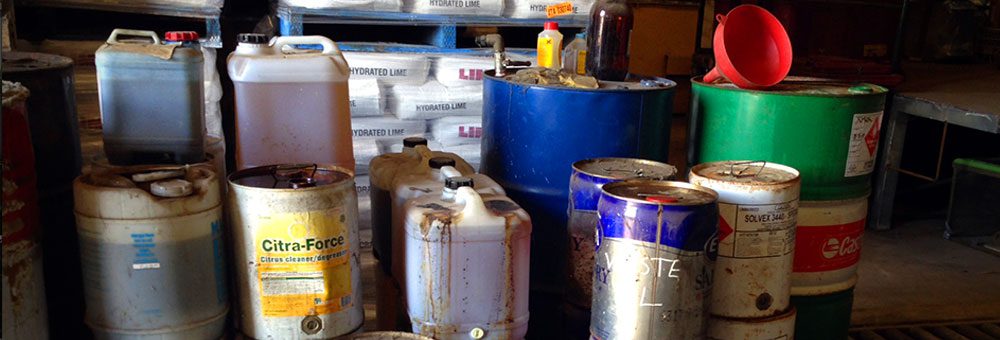Industrial Wastewater Treatment: Advanced Approaches for Effective Monitoring
Industrial Wastewater Treatment: Advanced Approaches for Effective Monitoring
Blog Article
How Liquid Garbage Disposal Works: A Comprehensive Introduction of Methods and Technologies Employed

Review of Liquid Waste Types
The intricacy of fluid waste kinds demands a thorough understanding of their attributes and implications for disposal. Liquid waste can generally be classified right into a number of types, including industrial, metropolitan, agricultural, and harmful waste. Each group exhibits distinct residential or commercial properties, requiring specific monitoring methods to mitigate environmental and health and wellness dangers.
Industrial liquid waste stems from making processes and frequently contains a series of pollutants, such as heavy steels, solvents, and natural substances. Local liquid waste, largely consisting of wastewater from families and industrial establishments, contains natural matter, nutrients, and microorganisms (industrial wastewater treatment). Agricultural fluid waste, including runoff from ranches, may have fertilizers, chemicals, and animal waste, posing dangers to water quality and communities
Hazardous fluid waste is characterized by its toxicity, sensitivity, or possible to trigger harm. Understanding these diverse fluid waste kinds is vital for establishing efficient disposal techniques and guaranteeing conformity with environmental policies.
Physical Therapy Methods

Screening is the initial action, where bigger particles and particles are removed from the liquid waste making use of displays or grates. In sedimentation storage tanks, heavier bits clear up at the bottom, forming a sludge layer, while the made clear liquid can be more dealt with.
Filtering is another important approach that includes passing the fluid via porous products, such as sand or membranes, to capture smaller sized fragments. This action improves the quality of the fluid, making it suitable for succeeding therapy procedures.

Chemical Therapy Methods
Chemical treatment methods are vital for successfully handling liquid waste, specifically in resolving dissolved and colloidal pollutants that physical methods may not adequately remove. These techniques utilize various chemical representatives to neutralize, speed up, or change unsafe compounds into much less dangerous types.
One common approach is coagulation and flocculation, where chemicals such as alum or ferric chloride are contributed to advertise the aggregation of put on hold fragments. This procedure boosts sedimentation, permitting less complicated removal of the resulting sludge. Furthermore, oxidation procedures, utilizing agents like chlorine or ozone, are employed to break down complex organic compounds and microorganisms, rendering the waste more secure for discharge or more therapy.
Neutralization is another critical strategy, which readjusts the pH of investigate this site acidic or alkaline waste streams to neutral degrees, stopping possible damage to downstream systems and the atmosphere. Additionally, progressed oxidation procedures (AOPs) use mixes of oxidants and ultraviolet light to deteriorate relentless contaminants, accomplishing a higher level of therapy efficiency.
Biological Treatment Procedures
Biological therapy processes play a critical duty in the monitoring of fluid waste by making use of bacteria to disintegrate raw material and reduce contaminant levels. These processes can be broadly classified into anaerobic and aerobic therapies, each employing details microbial communities to achieve efficient waste deterioration.
Aerobic treatment involves the use of oxygen to facilitate the break down of organic materials by germs. This process is generally carried out in turned on sludge systems, where aeration tanks provide a conducive atmosphere for microbial development, causing the oxidation of natural pollutants. The resultant biomass can be separated from treated effluent with sedimentation.
In contrast, anaerobic therapy happens in the lack of oxygen, depending on various germs to damage down natural matter. This method is specifically beneficial for high-strength waste, as it creates biogas, a renewable power source, while decreasing sludge production. Technologies such as anaerobic digesters are often employed in community and commercial applications.
Both cardiovascular and anaerobic organic treatments not just minimize the environmental effect of liquid waste however additionally promote source healing, making them vital elements of lasting waste management methods. Their versatility, effectiveness, and effectiveness sustain their widespread execution across various sectors.
Arising Technologies in Disposal
Cutting-edge strategies to liquid waste disposal are rapidly progressing, driven by improvements in innovation and an enhancing emphasis on sustainability. Amongst these arising modern technologies, membrane layer bioreactors (MBRs) have actually obtained grip for their capability to incorporate biological therapy with membrane layer filtering, resulting in top quality effluent that can be recycled in different applications. MBRs allow smaller footprints and extra reliable operations contrasted to standard systems.
One more encouraging development is making use of anaerobic food digestion combined with nutrient healing technologies, which not just treats fluid waste however also produces biogas and recoups beneficial nutrients like nitrogen and phosphorus. This dual benefit improves resource efficiency and minimizes environmental effect.
Additionally, progressed oxidation processes (AOPs) are being taken on for the degradation of intricate organic pollutants. These approaches utilize effective click over here now oxidants and drivers to break down pollutants at the molecular level, supplying a very efficient solution for tough waste streams.
In addition, the combination of expert system and artificial intelligence in waste monitoring systems is maximizing operational performance and anticipating upkeep, causing reduced prices and improved ecological compliance. These technologies reflect a significant change in the direction of more effective and lasting liquid waste disposal methods.
Conclusion
In final thought, effective liquid waste disposal necessitates a detailed understanding of different methods and modern technologies. By continually advancing these methodologies, it ends up being internet feasible to deal with the growing difficulties associated with liquid waste, inevitably adding to environmental protection and resource recuperation.
Fluid waste disposal is an important facet of ecological management, calling for a thorough understanding of various methods and technologies customized to different waste kinds. Liquid waste can extensively be classified into several types, consisting of commercial, community, agricultural, and unsafe waste. Agricultural liquid waste, consisting of drainage from farms, may include fertilizers, pesticides, and animal waste, presenting threats to water top quality and communities.
Numerous physical treatment techniques play a crucial function in handling liquid waste effectively - industrial wastewater treatment.In conclusion, efficient fluid waste disposal requires an extensive understanding of numerous methods and innovations
Report this page